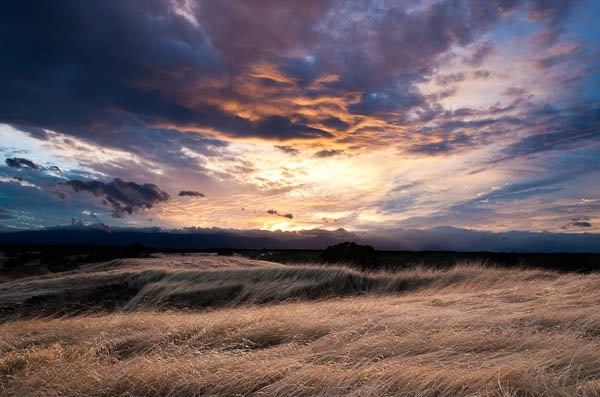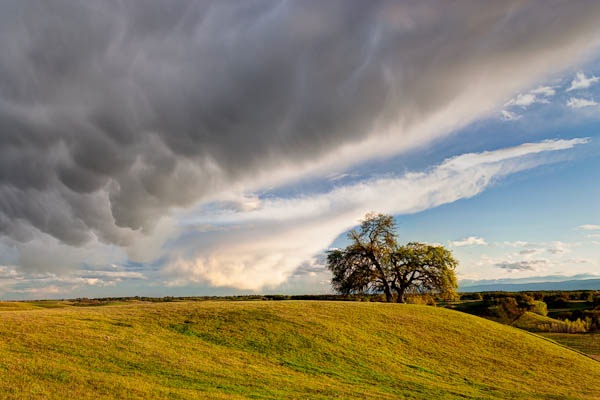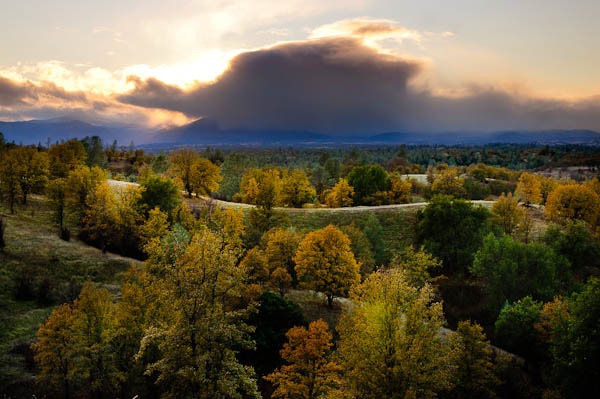Hands down, the number one question is how to make better landscape images. Many fall into the new-gear trap thinking that when I upgrade to some new DSLR then I’ll be able to take better pictures. They buy the gear and suddenly the wind drops from their sails and their images still lack impact. So let’s talk about some things you can do to make your landscape photos pop.
1. Fanatically Chase the Best Light
What is good light you say? There is really no such thing as bad light, but it’s hard to create images with impact during the middle of the day when the sun is high. Midday the sun is harsh and it washes out colors and texture with heavy dark shadows.
The best time to get out and shoot everyday is when the sun is low in the sky because it creates more interesting side lighting that gives the subject more depth and scale. The light is much warmer creating softer highlights with better texture detail. This low warm light is also near sunrise and sunset and those are obvious times to add amazing colors to a landscape.
Another great place to look for amazing light is at the edges of storms. When a storm is passing through, the clouds can break up allowing the sun to peek through creating very dramatic scenes with well lit foregrounds against a dark sky. The air is clear and the ground is wet reflecting more of the colorful light from the sun. These kinds of storms move quickly and the light can change in a moment, so you have to be ready.
Shooting during off hours of the day is tough because those are very anti-social times. The first part of the day just after sunrise is really early and most of us still have to work five days a week. In the evening, the best light is going down right when dinner is served and it’s hard to leave your family behind and return to eat your dinner cold.
2. Don’t be Lazy
Getting good light in a landscape shot is the same difference between shooting a model with and without makeup. You have to work to get to these locations early in the morning and late in evening. At sunrise, that means hiking out in the dark to get on location to catch sunrise. That means flash lights, an extra layer of clothing and a stiff brew of coffee to keep you awake through the wee hours of the morning.
Patience is also key. You might be hiking during the day and find the best view looking down Yosemite Valley but it’s midday and the light sucks. To get this shot you need the fortitude to sit there half the day for the sun to get low and possibly put up a nice sunset for you. The light may not do what you want, so are you willing to stay another day to try again? If you do, your shot won’t be just another Tunnel View.
3. Know Your Landscapes
There is this odd grass is greener somewhere else mindset all of us fall into. We believe we have to travel somewhere to get a great landscape shot. The truth is, you know your area like the back of your hand and if you don’t, get in your car and explore. A vast majority of my best images were all taken within 75 miles of my home. Keep in mind that the whole world doesn’t get to look at your countryside daily. So when it’s boring and repetitive for you, it’s always new and exciting for your admirers.

When travelling, do your research before you get there.
Google Earth is my number one go-to app for researching locations. You can go a step further and use The
Photographers Ephemeris which plots where the sun and moon will rise and set. This is a lifesaver for knowing when the sun will hit a peak and from what angle. I can find out when the sun will go down behind a ridgeline to shoot a waterfall. Being armed with this research will dramatically boost the number of keepers and and your fans will think you’re a rockstar.
4. Don’t be a Chicken
Have you ever gotten to an awesome landscape and failed to get the shot because you didn’t cross a creek or you didn’t want to lay down in the mud to get an awesome new perspective. Often times changing our point of view can completely change a composition. I’m not suggesting you do anything dangerous, only you try pushing yourself beyond your typical comfort zone to really work for that shot. When I shoot moving water, inevitably, you will find me standing in the middle of the creek so I pack waders with me to stay dry.

Perhaps to get a clear view of a rainbow you need to get down on the ground and lay in some mud to see around some brush. If you have a fear of the dark, make steps to work past that fear so you can stay out past blue hour and not be afraid to walk back to your car in the dark with a flashlight. Perhaps the mosquitoes are acting like Africanized Bees. Be prepared with bug spray and swat a few so you can get the shot regardless. Landscape photography is often uncomfortable, slightly dangerous and downright boring, but if you’re willing to work past these challenges, the results will create incredible impact.
5. Use Different Focal Lengths
For most people, when they think of a landscape, they think of big expanses shot using a wide-angle lense. Try something different by shooting with longer focal lengths. This allows you to really focus in on specific details. You can see past all the distractions and you get to give the best part of the scene the whole stage.
Wide-angle tends to make distant objects like mountain peaks feel distant and small. Telephotos will bring that peak in close and will compress all the objects together making them feel bigger and giving them a much greater impact.
You can still get great impact shooting wide. Many incorrectly believe that wide angle lenses are good for “getting it all in”. The opposite is true. Since you can get more in the shot, it allows you to get much closer to the subject filling the frame with more of what you want having fewer distractions.
Final Words
If you struggle with creating dull and insignificant images, the recurring theme through all of these tips is simply to do something new that you’re aren’t doing now. Growing your craft is not a 5-step checklist, it’s a process that takes time. Get out of your computer chair and experiment, keep making mistakes, and don’t forget to have fun! For me each new image is the thrill of the hunt. I love to seek the unknown and share it with the world. Images created by overcoming the biggest hurdles with the most blood, sweat and tears always move people the most.








